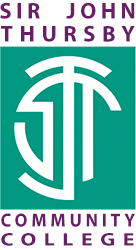Topic 2 Year 8 Mathematics
| Mathematics | |||
| Topic | Forming and solving equations | ||
| No of lessons | 8 | ||
| When is it happening | Term 1 Year 8 | ||
| What will students learn | In this unit students formalise methods for solving equations. Students use inverse operations to transform equations with one and two steps and encounter equations involving a single bracket. Equations are derived from familiar contexts and the solutions to these equations are interpreted within that context. Once secure with using inverse operations to solve equations, students should move on to working with equations where the unknown appears on both sides. Throughout the unit, students are encouraged to explore different transformations of an equation and reason which transformations are useful for solving different equation types. | ||
| Key Knowledge that students should know at the end of 'Topic' | This is the knowledge that students will meet for the first time in this topic |
Classifying expressions, equations, inequalities and identities
|
|
| This is knowledge that students may have met before but will need to deepen their understanding |
Generating Algebraic expressions and equations, Solving equations with one unknown where the unknown appeared on one side of the equation |
||
| Key Skills that students should be able to demonstrate at the end of 'Topic' | This is the skills that students will meet for the first time in this topic | Four operations | |
| This is skills that students may have met before but will need to develop | Four operations | ||
| Key vocabulary that students should know and understand | Coefficient, Identity, linear, Expand | ||
| The Big Question | Are you able to form and solve equations? Are you able to apply these skills to problems including shapes and angles? | ||
|
Key questions that students should be able to answer at the end of the 'Topic' |
Are you able to successfully substitute values of unknowns into equations and expressions. | ||
| Can you identify whether a problem is an equation, expression or identity? What is the difference? | |||
| Can you form expressions and equations for the perimeter of shapes? | |||
| Can you use bar models to form expressions and equations and use these to solve? | |||
| Can you use your knowledge of shapes and angles to equate expressions and solve? | |||
| Can you use your knowledge of shapes to solve two step equations? | |||
| Are you able to use your knowledge of angles in a triangle to form and solve equations? | |||
| Are you able to understand and extract the relevant information from a worded problem to form an equation and solve? | |||
